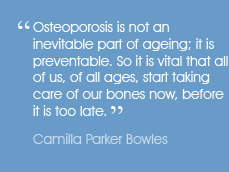
 |
 |
 |
|
| 7th December 2025 | ||
 |
Variations on HRT.An answer to the ‘one dose fits all’ WHI study. ABSTRACT
IntroductionTwo major well publicised studies, the Women’s Health Initiative (WHI) (1) and the Million Women Study (MWS) (2) has shaken the faith in the safety of HRT for doctors and post menopausal women alike in spite of the criticism of the design and conclusions of the WHI study (3-5) and the many anxieties about the MWS data collection. (6-8) It is now difficult to respond to the WHI study in an optimistic way and for this to be considered and published. Following the NAMS/NIH statement of October 2002 (9) many proscriptive guidelines from advisory bodies in Europe and North America have appeared, which advise prescribing hormone therapy at the lowest dose principally for menopausal vasomotor symptoms, and for the shortest time. (10) It was also recommended that it was not to be used as a primary treatment for low bone density and that it has no place in the prevention of coronary heart disease. In view of later consideration of the data both items of advice are questionable. There is no protest about the uncontroversial recommendation that the lowest dose should be used and the appropriateness of continuing HRT should be reviewed each year with full discussion of benefits and risks. However the ‘lowest dose’ varies from patient to patient and should be one that is effective for a particular indication. What is missing from statements from regulatory authorities is the understanding that treatment should be individualised for a particular patient, her expectations and her pathology. Such variation of therapy is sound clinical practice but it is notable that the great fault of the WHI study is that there was no individualisation with the assumption that one dose of Prempro fitted all patients regardless of age and general health even though they were, by their inclusion criteria, asymptomatic and did not require therapy. The epidemiologists and investigators who designed the WHI were not aware, or chose to ignore the basic tenant of good practice relating to HRT. This is the knowledge that different women, require a different dose, by a different route, of different combinations, of different hormones, for different symptoms. This would also vary depending upon the surgical status, the age of the patient and there will also be a difference depending on the clinical needs of the woman. This paper is an attempt to correct that omission by stating the variations necessary for effective treatment with estrogens with the possible addition of progestogens and androgens.. Age.Perhaps the most fundamental variation is one of age. The average age of the women in the WHI study was 63 with a range of 50-79 and 22% being recruited for therapy over the age of 70. The study demonstrated an increase in breast cancer and VTE, a decrease in colon cancer and fractures of the hip and spine as well as an unexpected increase in heart attacks and stroke. (1) However it should be recognised that as 97% of patients in normal clinical practice commence treatment below the age of 60 and it is this age cohort of patients which is of particular interest to the prescribing physician. (11) The data from this age group are reassuring, as a later report the WHI study in 2003 showed that the excess of cardiovascular events (12) occurred only in women starting oestrogen and progestogen therapy 20 years after the menopause, and that there was a non significant (HR 0.89) decrease in these events in women starting the therapy within 10 years of the menopause. Similarly the oestrogen only-arm, (13) which was reportedly stopped in 2004 because of an excess of stroke, showed that in the 50-59 year old age group there was a 42% decrease in coronary heart disease being much the same as the protection found in the former case control studies. There was also a 28% decrease in breast cancer, a 41% decrease in colo-rectal cancer, a 27% decrease in deaths and a 20% decrease in global index pathology. The 8% increase in stroke was in fact 19 patients in the control group and 19 patients in the active group. None of the considerable beneficial changes were significant but it does raise a question why this age cohort of the oestrogen- only study was stopped as results could have confirmed the cardiovascular and colo-rectal benefits in the many earlier observational studies. It was a lost opportunity to solve this continuing controversy. When to Start?There are clear differences concerning the correct time to start therapy. Most women start HRT in the post menopausal state but this can be soon after a normal menopause in the early fifty year age group or later in a 60 plus age group. Hormone therapy may also be required in younger women after a premature menopause (14) or following hysterectomy and oophorectomy (15). These groups should all be treated in different ways. HRT may also be prescribed to peri-menopausal women in the transition phase before the periods have ceased if they have appropriate symptoms. These will require different doses of different hormones depending on the age and clinical needs and will be discussed in detail. Essentially older women need a smaller dose, and non hysterectomised women may also require testosterone for specific symptoms. Indications for starting HRTThe indications for HRT in this review are wider than those initially recommended by NAMS CSM and EMAS where the advice is a result of the “one dose fits all” WHI study and the incomprehensible data collection of the MWS. An alternative view is that hormone therapy prescribed intelligently is safe and associated with considerable quality of life benefits. In Europe oestrogen has been principally given for the treatment of climacteric symptoms and for the improvement of low bone density. The symptoms may be due to the vaso-motor instability of hot flushes and sweats with insomnia and tiredness or pelvic atrophy with vaginal dryness, dyspareunia, sexual dysfunction and the urethral syndrome. (16) The oestrogen may also be given for the prevention or the treatment of osteoporosis in women with decreased bone density as estrogens in the appropriate dose has an anabolic as well as an anti-catabolic effect on the skeleton. (17) More controversial indications would be for peri-menopausal depression (18 19) or premenstrual syndrome, particularly in the years of the peri-menopausal state. (20 21) Loss of energy and loss of libido in association with climacteric symptoms are distressing for the couple and should be indications for oestrogen sometimes with the addition of testosterone. (22) The value of oestrogen therapy in the prevention of coronary artery disease, Alzheimer’s disease and stroke is now controversial and would not with current knowledge be recommended. Similarly, the belief that oestrogens are of value in the secondary prevention of further coronary artery disease seems no longer valid. Thus, oestrogen therapy for prevention of these chronic cardiovascular and neurological disorders is no longer recommended although many workers cling to the hypothesis of a window of opportunity for prevention if oestrogen therapy is started in the first 10 years after the menopause before irreversible arterial and neurological degeneration has occurred. The different indications are discussed in more detail. Vasomotor SymptomsThese classical and the most common symptoms of the climacteric are the
vasomotor symptoms of hot flushes, palpitations, night sweats with insomnia
and headaches which all respond well to oestrogen therapy. Patients with
these symptoms require low dose oestradiol preparations either by an oral
route, by gel or patch for 3 months or longer for the duration of symptoms.
The commencing dose should be low but can be increased to a dose which alleviates
the symptoms. Because of the anxiety about breast cancer many other treatments
particularly herbal remedies, SSRIs or clonidine have been used but none
are as effective as estrogen in women who have these troublesome symptoms.
The increasingly popular natural herbal remedies are usually no better than
placebo, but even if pharmacologically active, they are uncontrolled, poorly
investigated, of unknown estrogenic potency and not without serious side
effects. Pelvic AtrophyVaginal dryness like vasomotor symptoms should be easy to treat with estrogens. After the menopause women lose collagen from the skin, ligaments, bone matrix, the genital tract and bladder which can be corrected with hormone replacement.(29) These patients with symptoms of pelvic atrophy should have the same low dose oestradiol, with the appropriate progestogen if necessary, for as long as it takes to eradicate the symptoms. Local vaginal oestradiol or oestriol can be used. Progestogen is not normally added to this therapy although endometrial proliferation and hyperplasia may rarely occur. If bladder symptoms of urgency and recurrent “cystitis” are present a higher dose may be required for a longer duration regardless of whether the route of administration is local oral or transdermal. Premature MenopauseApart from the sadness of infertility, women with a premature menopause have a higher incidence of osteoporosis, coronary heart disease, stroke and also depression (30). Indeed it was this association which led to the concept of estrogens preventing these chronic diseases in older women. Estrogen therapy has been shown to increase the bone density and also to improve the histomorphometric parameters of strength of bone even in young women with Turner’s syndrome (31). They need HRT in the appropriate dose for these symptoms until at least until the age of 50, the time of the normal menopause. If there is to be a 5-10 year recommended limit for the duration of HRT, these treatment years should be counted from the age of 50, the age of natural menopause. In reality these young women with their excess risk of chronic disease are having their estrogen therapy discontinued or not started due to the anxiety created by the common misinterpretation of the WHI data. Post Hysterectomy and OophorectomyWomen who have had a hysterectomy should have continuous oestrogens without progestogens and thus treatment should be straightforward without bleeding and without PMS type symptoms produced by gestogens which often limit the acceptability of HRT. However, these women may need a higher dose than is usual for the vasomotor symptoms and as the surgery usually occurs in premenopausal women they may well, like those with a premature menopause need oestrogens for a longer duration for relief of symptoms. If the ovaries have been removed these women would have lost their ovarian androgens and be at risk of developing the Female Androgen Deficiency Syndrome (FADS) characterised by loss of energy, loss of libido, depression, loss of self-confidence and headaches. (32) These are frequent complaints in women who have had a hysterectomy with loss of ovaries and have been receiving a low dose of oestrogens over the years. These symptoms can usually be eradicated by the addition of testosterone, either in the form of implants (licensed for women in many countries) or Testogel, which although effective will have to be used off-licence in women using about one quarter of the dose recommended for men. However, the fact that it is not licensed in a particular country is not a good reason to deny women this important item of treatment. It should not be forgotten that testosterone is not only a normal female hormone but it is present in higher concentrations in young women than oestradiol. Estradiol and testosterone implants are the most effective and convenient
route of administration for these women with the pellets inserted into the
wound on closure and repeated approximately every 6 months as a simple office
procedure (15). The fact that it is an old drug lacking in patent or profit
or the benefit of costly licensing studies does not reduce its value in hysterectomised
women or those with problems of loss of energy and libido or depression. There are many patients in their forties with severe recurrent depression, sometimes cyclical, who will respond well to transdermal oestrogens. These patients with reproductive depression often reveal the changes of mood with changes in hormone levels because of a past history of post natal depression, premenopausal depression as well as the severe depression in the peri-menopausal years of the transition. Often they state that they were last well during the last pregnancy many years ago. They then developed post natal depression which became cyclical as premenstrual dysphonic disorder (PMDD) when the periods returned having only about 10 good days per month free of PMS periods and menstrual headaches. The depression then becomes less cyclical and more constant. (33) These peri-menopausal women respond well to moderately high doses of transdermal oestrogens (either moderately high doses 100µg-200µg) which not only suppress any residual cycle but have a mood elevating effect. As these women with hormone responsive depression are often progestogen intolerant, the continuous oestradiol treatment should be supplemented with progestogen tablets for 7 days of each calendar month rather than the orthodox 14 days. A Mirena IUS is also useful preventing the recurrent depression that often occurs with progestogen Oestrogens do not convincingly help the depression of post menopausal women apart from the domino effect of removing night sweats/insomnia or vaginal atrophy and sexual dysfunction. It seems to have little significant effect in the absence of these classical menopausal symptoms. Low Bone Density
The advice from the regulatory authorities that estrogens should not be first line therapy for the prevention or treatment of osteoporosis particularly in otherwise healthy women under the age of 60 has been questioned (34). Regrettably there has always been a conflict, almost a “turf war” between bone physicians for whom the side effects of bleeding, mastalgia and PMS symptoms with progestogen is uncharted territory and gynaecologists who are more familiar with the problems of gonadal hormones. This has been reinforced by Banks et al (35) of the MWS who claim that on cessation of estrogen therapy bone density “rapidly” reverted to pre-treatment levels. This has been disputed, (36 37) but it does further demonstrate the design problem of this study which relied upon a single questionnaire. In reality ten years of moderately low dose estrogen therapy will increase the vertebral bone density by approximately 10% It is both counter-intuitive and certainly against clinical observations that this benefit is rapidly lost .However it is used as further justification to use non hormonal therapy as first choice or to discontinue this therapy after a short course of estrogens in these younger women in spite of the added quality of life benefits of hormone therapy. Older Menopausal WomenOlder women in the past have been shamefully neglected due to the belief that the osteoporotic skeleton did not respond to drugs which otherwise would increase bone density in younger women. In reality the skeletal response to estrogen is greatest in women who had the lowest bone density and who are most years past the menopause. (38) It appears that this denial is occurring again following justifiable anxiety about the cardiovascular effects found in older women in the WHI study. These women require the lower starting dose of oestrogens or bisphosphanates may be used as a first option. If older women are treated with oestrogens it is advisable to start on low dose unopposed therapy for the first 3 months using oestradiol patches or gels or oral oestradiol 0.5mg daily. At 3 months after assessing the symptomatic response a decision should be taken whether to continue to use low dose unopposed oestrogens or to add a monthly low dose, low duration, progestogen component. Bleed free preparationsThe desire to have estrogen therapy without a withdrawal bleeding opens up a large variety of therapeutic possibilities. The use of continuous estrogen and progestogen is effective, commonly used but is currently suspect because of the data from the WHI study. However it continues to be with justification the most frequently used preparation for this purpose. Recently there have been reports of low dose or ultra low dose continuous estrogens producing relief of symptoms and bone protection without bleeding. (27) Tibolone is a complex gestogen with estrogenic and androgenic properties, which by depressing SHBG (39) levels increases free testosterone thus having a beneficial effect on energy libido and depression. (40) The use of SERMS with their certain protective effect on breast cancer is being evaluated although this drug does produce vasomotor symptoms as well as the desirable endometrial atrophy and amenorrhoea. Summary and conclusionsThe principles of hormone therapy for the menopausal or perimenopausal woman can be summarized thus. These items are not entirely consistent with the current advice of regulatory bodies but they do reflect a studied analysis of the available data as well as a long clinical and academic interest in the subject. Medical practitioners of all levels require guidance for the hormonal treatment of middle aged women. These views should be considered, discussed and criticised as a fresh clinical approach is urgently needed. Currently many women suffering severe hormonal disorders are being needlessly denied appropriate safe hormone therapy
REFERENCE
|
|
| ^top |